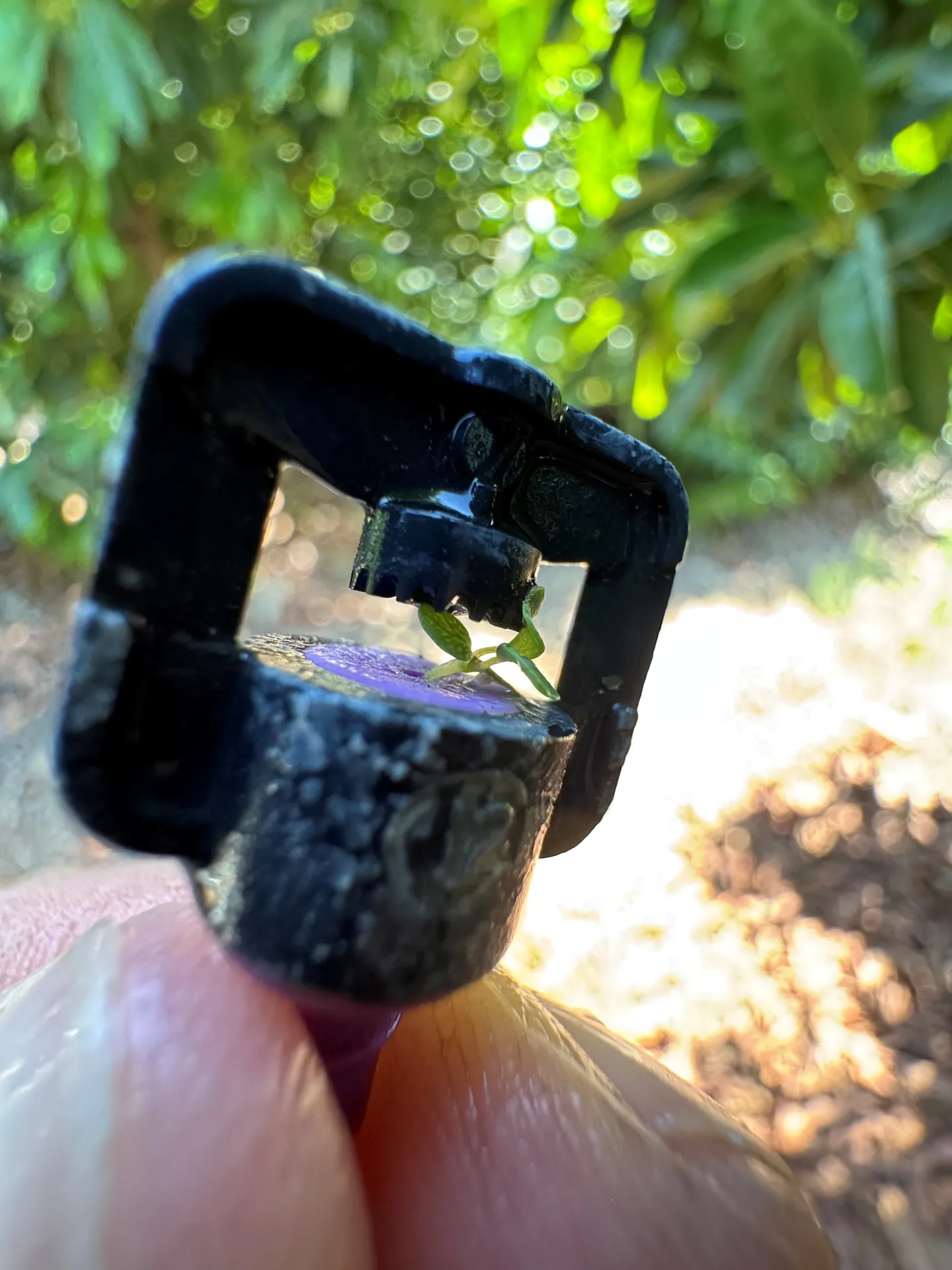Emitter clogging – either microsprinkler or drip, they both emit – is fairly easily dealt with through proper filtration for particulates like sand and gunk; with chemigation for clearing out bacterial and algal slimes and chemical precipitates; and just regular flushing to deal with stuff that builds up over time. Insect incursions, especially ants that like to build nests and storage facilities in irrigation lines that cause clogging is another issue. One would think that running water through lines would be a poor choice of living area for insects and for food storage, but it happens.

Photo: Danny Klittich
In the image above, there is a small seedling sprouting in the emitter. The emitter hole is just large enough for the ants to get in with their stash of seeds. Spotted spurge is a shy weed that lies flat to the ground and produces prodigious amounts of small seed that harvester ants like to collect. Harvester ants are a generic reference to a bunch of different ant species that thrive on seed collection. Pogonomyrmex californicus is a common harvester in southern California. And spotted spurge seed is a common clogger in irrigation systems. And once, this type of clogging occurs, sometimes it’s necessary to clean the emitters individually. Truly a pain.
What’s the solution to this problem? Filtration at the front end of the lines is not going to stop this, because it happens after the filter. Running the irrigation system should discourage this stored seed, but it doesn’t, especially after a dry winter when the system hasn’t been run for a while. Flushing on a regular basis is going to help but doesn’t always work with the most pernicious clogging. Pulsing the system, turning the system on and off can help. Regular flushing does work, though, if this is done consistently. Running chemicals, such as acids and chlorine will help clear algal and precipitate clogging and can help with clearing seed clogging. The acid and or chlorine (don’t mix the two together) need to sit in the system for several hours to break the seed down. Make sure there are no metal parts that might be affected.
But nothing seems to work if there is a lot of seed. Cleaning the emitters by hand is the solution. And while doing that, think of what could replace those emitters that are prone to ant seed storage. There are microsprinkler emitters with caps that close once irrigation pressures subside. In-line drip emitters with their sinuous paths tend to attract fewer ants. Raising drip emitters off the ground, discourages emitter storage. But there’s really no substitute for regular maintenance to discourage ant creating storage units out of the irrigation lines.

Laguna Wilderness Park, Laguna Beach, Orange County, California. 2/8/08. © Peter J Bryant
For more general guides to Microirrigation clogging, check out our website:


